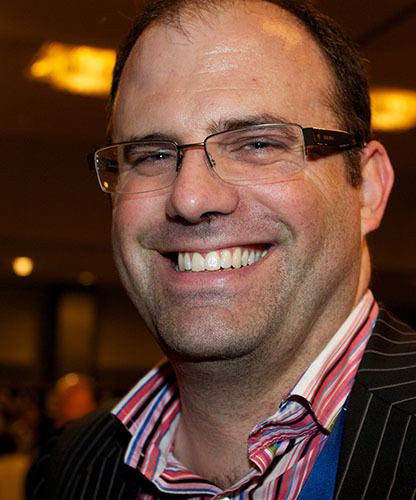Nationality United States Fields Wireless Role Electrical engineer | Name Robert Heath | |
 | ||
Institutions The University of Texas at Austin Doctoral students ListNamyoon Lee (2014)Amin Abdel Khalek (2013)Chao Chen (2013)Insoo Hwang (2013)Omar El Ayach (2013)Steven W. Peters (2013)Salam Akoum (2012)Behrang Nosrat-Makouei (2012)Robert Daniels (2011)Ali Yazdan Panah (2011)Takao Inoue (2009)Rahul Vaze (2009)Chan-Byoung Chae (2008)Caleb Lo (2008)Kaibin Huang (2008)Sumohana C. Channappayya (2007)Runhua Chen(2007)Taiwen Tang (2006)Manish Airy (2006)Antonio Forenza (2006)Bishwarup Mondal (2006)M. Farooq Sabir (2006)David J. Love (2004). Institution University of Texas at Austin Alma mater | ||
Other academic advisors G. Giannakis | ||
Robert W. Heath Jr. is an American electrical engineer, researcher, educator, wireless technology expert, and a Cullen Trust Endowed Professor in the Department of Electrical and Computer Engineering at The University of Texas at Austin. He is also the president and CEO of MIMO Wireless Inc. He is the former Director of the Wireless Networking and Communications Group.
Contents
Early life and education
Heath received his Ph.D. in Electrical Engineering from Stanford University in 2002 under the supervision of MIMO pioneer Arogyaswami Paulraj. He completed his M.S. degree in the same field from the University of Virginia in 1997 under the supervision of G. Giannakis, and his B.S. in Electrical Engineering from the University of Virginia in 1996.
Career
From 1998 to 2001, Heath was a Senior Member of the Technical Staff and, later, Senior Consultant at Iospan Wireless Inc, San Jose, CA. At Iospan he was part of a team that designed and implemented the physical and link layers of the first commercial MIMO-OFDM communication system. Since January 2002, he has been with the Department of Electrical and Computer Engineering at The University of Texas at Austin where he is a Cullen Trust for Higher Education Endowed Professor, and is a Member of the Wireless Networking and Communications Group. He is also President and CEO of MIMO Wireless Inc. and Chief Innovation Officer at Kuma Signals LLC. He was the Director of the Wireless Networking and Communications Group from 2012-2014, where he oversaw an expansion of the center in terms of faculty and students, and an increase in research expenditures to more than $5M per year. He is a co-author on more than 450 refereed conference and journal publications. He is also a co-inventor of 50 U.S. patents. He authored a laboratory manual that teaches the principles of wireless communication to undergraduate students and co-authored a book on millimeter wave wireless communication. He is particularly known for his work on different aspects of MIMO communication systems.
Professional career
Heath's early work at Stanford advanced the then nascent field of MIMO communication. During his Ph.D. he took a leave of absence to be one of the first employees at Iospan Wireless (earlier known as Gigabit Wireless Inc), where he was part of a small team that created the first practical MIMO-OFDM radio (a predecessor of what we now know as IEEE 802.11n). His work at Iospan resulted in several early patents on critical MIMO technologies.
Heath's work at Iospan led to his discovery that, depending on the wireless propagation conditions, different MIMO configurations, e.g., spatial multiplexing or space-time coding, are preferred. Heath's discovery opened new research avenues to enhance the fundamental understanding of performance limitations in MIMO wireless communication. From his diversity and multiplexing discovery, he also recognized the critical importance of feedback and adaptation in MIMO wireless systems, i.e., to make MIMO wireless communication commercially viable the receiver must inform the transmitter about the best MIMO configuration before communication
At UT Austin, based on his insights into the importance of feedback in MIMO communication, he pioneered MIMO feedback strategies (limited feedback precoding). Heath was able to construct a strategy for which the overhead penalty for feedback was very small (only a few bits of feedback required to configure an entire MIMO transmitter). This allowed practical MIMO wireless communication to achieve data rates and link reliability very close to theoretical expectations by varying the number of spatial multiplexing streams.
Views on 5G
Heath is an advocate of moving to millimeter-wave spectrum for the 5G cellular standardization. He recognizes, however, that 5G cellular deployments will likely require significant changes to cellular planning. He has predicted that, due to blockage, millimeter wave cellular will need to be much more densely deployed. Heath also recognizes that 5G cellular will require significant advancements in beamforming protocols, in particular with respect to the speed in which beamforming is trained, to make 5G cellular at millimeter waves viable. He has been a strong advocate of the automotive application for 5G.
